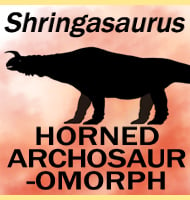Brachychampsa
In Depth The crocodiles seem to have been quite resilient to the effects of the KT extinction sixty-five million years ago that marked the death of the dinosaurs, as Brachychampsa is yet another genus of crocodylian that is known to have existed for several million years before and after this extinction event. Dyrosaurus is another … Read more

